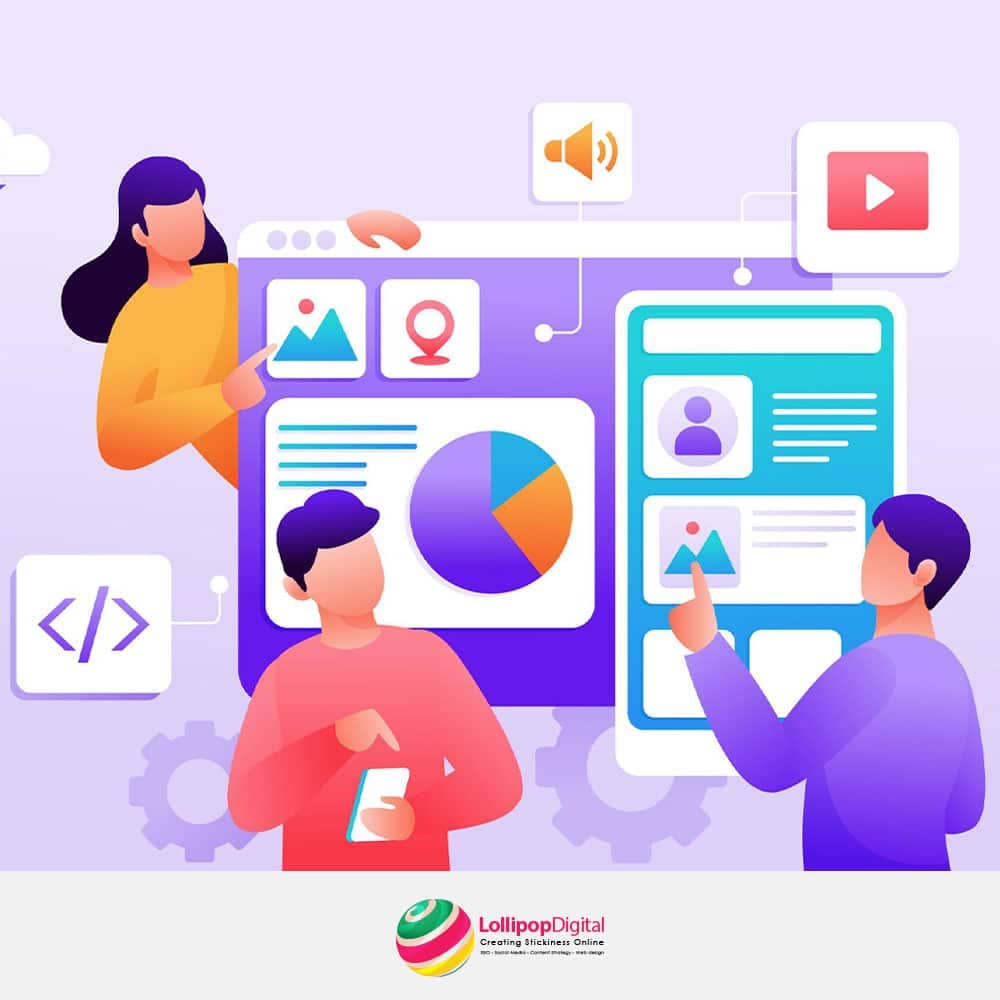
Technology has come a long way, to the point where users can perform tasks that could never have been done decades ago. Within minutes, we can buy from a store and process a payment from the comfort of our own homes. We can also configure virtual assistants like Alexa, Siri, and Cortana to do tasks for us. Indeed, the web is brimming with apps that enable us to automate our activities and make our daily lives easier.
These days, most people can shop online or play games on their mobile devices. Even the least tech-savvy individuals can use an app to call a ride. We can attribute this convenience to expertly designed User Interface (UI) and User Experience (UX). These are what web and app designers use to interact with their consumers. In many ways, UI and UX are similar. Even so, they are still distinct from each other. In this article, we will discuss the similarities and differences between UI and UX.
What Is UI?
The Interaction Design Foundation defines user interface as:
“The process designers use to build interfaces in software or computerised devices, focusing on looks or style.”
UI enables users to operate a device or machine smoothly and effectively. It allows users to perform various tasks like scrolling through a web page, using a smartphone, and making an online purchase, among others. Master’s In Data Science also points out that UI “draws on visual design, information architecture, and interaction design.” Meanwhile, for websites, UI is often synonymous with an attractive design, clean sitemap, or interactive features. These elements help users respond to a specific call to action.
User Interfaces require both input and hardware. Input hardware are the devices users control, such as the mouse and keyboard. Meanwhile, output hardware, such as speakers, screens, and printers, are the devices that perform the command coming from the input hardware. These work together to enable the user to fully control the machine.
UX Planet editor-in-chief Nick Babich shares that there are various types of user interfaces. The most common are command line interface, graphic user interface (GUI), and voice-enabled user interface.
- Command line interfaces are one of the oldest types of interfaces. Users will type a command on the machine, then the device will respond to it.
- Graphical user interfaces, meanwhile, use visuals to interact with the user. It basically consists of screens or images on a machine with text sections and other interactive buttons.
- Voice-enabled user interfaces allow you to use your voice to make commands. Examples include Alexa, Siri, and Cortana.
What Is UX?
User Experience, on the other hand, is still a growing field that seeks to develop a deep understanding of the user. It gathers information about the user’s intent and desires. It seeks to understand the things they value, their abilities, and their limitations. The benefits of UX extends to products, services, and even company operations. According to Usability.gov, “UX’s best practices promote improving the quality of the user’s interaction with and perceptions of your product and any related services.” Ultimately, UX is a user-first design.
Information architect and Semantic Studios founder Peter Morville shares the seven cores of UX:
- Useful: The content must suit the need of the user. It must also be innovative and yet, original.
- Usable: It must also be very easy to use.
- Desirable: Still, the content must be very appealing. So, the use of images and other aesthetic graphic design remains important.
- Findable: The site or the product must be easy to navigate. Users can easily find what they are looking for or what they need.
- Accessible: People with disabilities must also find the content convenient for them. This is ethical.
- Credible: With the rise of spams, suspicious websites, and malicious files, the need to be trustworthy has also risen.
- Valuable: The content must also provide to the user with something worth their time, effort, and, sometimes, money.
Per Usability.gov, here are the disciplines in which a successful UX must build upon:
- Project Management
- User Research
- Usability Evaluation
- Information Architecture (IA)
- User Interface Design
- Interaction Design (IxD)
- Visual Design
- Content Strategy
- Accessibility
- Web Analytics
UI and UX Difference Explained
The difference between UI and UX lies with how they keep the user in mind. UI seeks to give a great presentation, while UX seeks to give a practical experience. This means that the priorities of UI are efficiency, effectiveness, and design. The user must be attracted to how it looks, so aesthetics is of great importance to UI. On the other hand, UX prioritises user satisfaction. This encompasses usefulness, usability, design, accessibility, and even credibility. Somehow, UX overlaps and even goes beyond the scope of UI. UI focuses on visual properties while UX concentrates on the overall experience.
How the Roles Differ for UI and UX Designers
The roles of both a UI designer and a UX designer are very different. Babich details that a UX designer must be able to understand the user (what they need, what they want, and so on). For instance, if you hire a web design company in Perth, they will create a design strategy for you. The plan will show the purpose of the site and will follow a logical journey.
UX: Focus on Interaction
A UX designer must also be able to analyse how users interact with the product. They must study user habits, preferences, and feedback. What’s more, they must provide solutions should a problem arise regarding the user’s interaction with the product. Meanwhile, a UI designer must pay close attention to detail. They should also have good problem-solving skills while ensuring that the UI design adapts to any screen size and resolution.
UX: Focus on Motivation
Since UX designers seek to understand the user, they place importance on a user’s functional interactions and emotional reaction to the product. They will experiment on what they think the user will like and what will make them scroll down the content. A UX designer will find the intent that will motivate the user to click a CTA button. In a way, they’re trying to read the mind or emotions of the user. They do this by analysing different strategies that will make the user feel comfortable and satisfied with the experience.
UI: Focus on Design
UI designers, on the other hand, have the layout of the product in mind. What makes a site or a product enticing? What’s the best colour palette that will make a CTA stand out, but will not distract the user? How do you make the screen size and resolution compatible for PCs and phones? These are just some of the many questions a UI designer will ask with regards to the content.
Conclusion
Despite their differences, UI and UX go hand in hand. Now, if you’re going to be putting up a website for your business, you’ll need to hire professionals who understand the vital aspects of UI and UX. As a seasoned SEO company in Perth, Lollipop Digital has a team of expert digital marketers and web designers. We will ensure that your website is desktop and mobile-responsive. What’s more, we will optimise it for search engines, so that your target audience is bound to discover it.
Get in touch with Lollipop Digital now and get a free website analysis!






